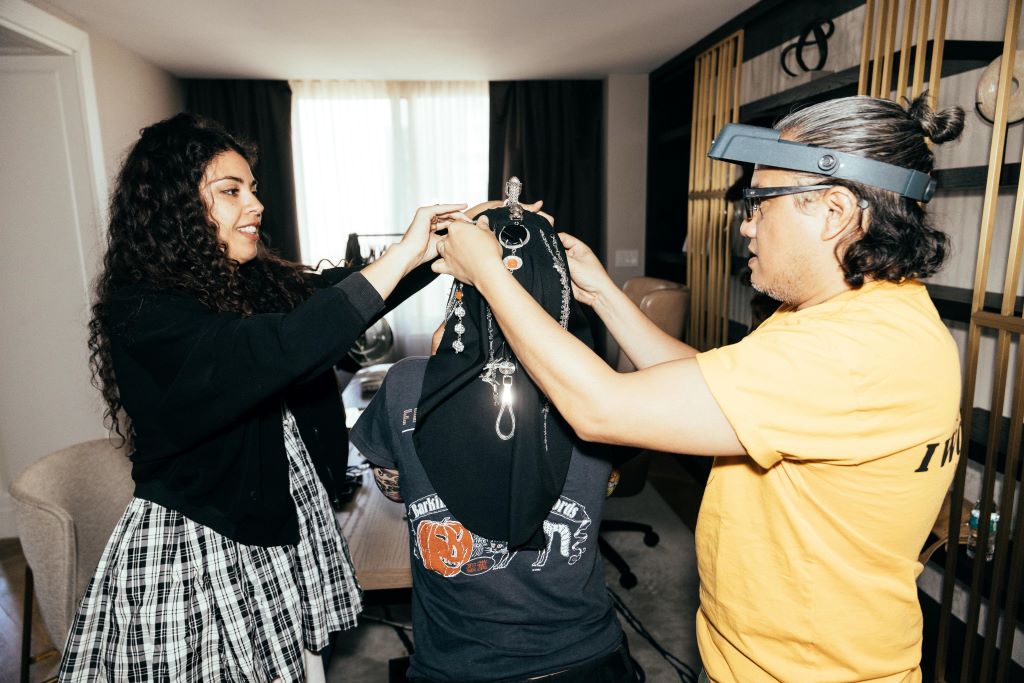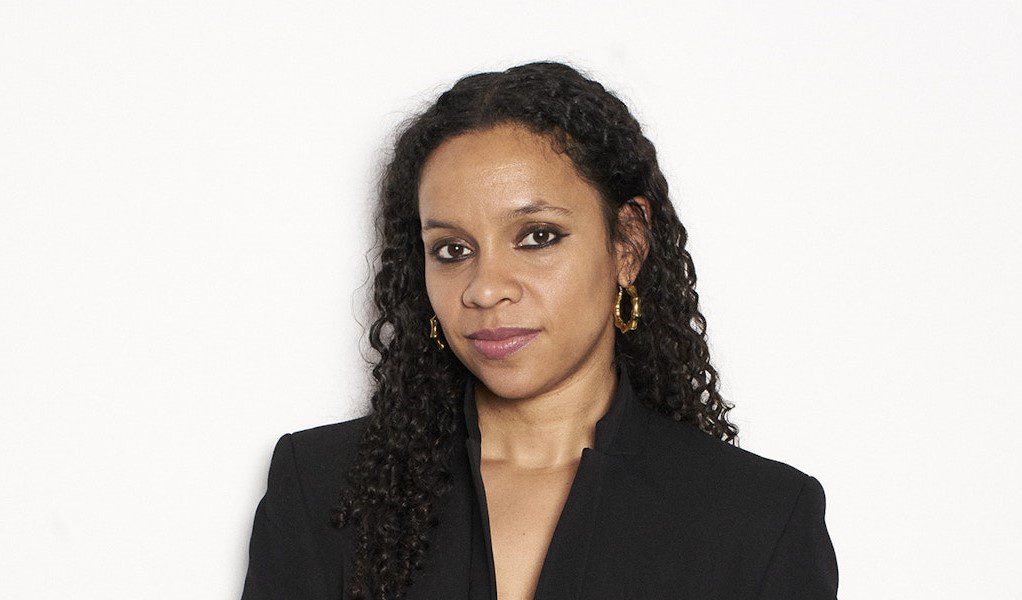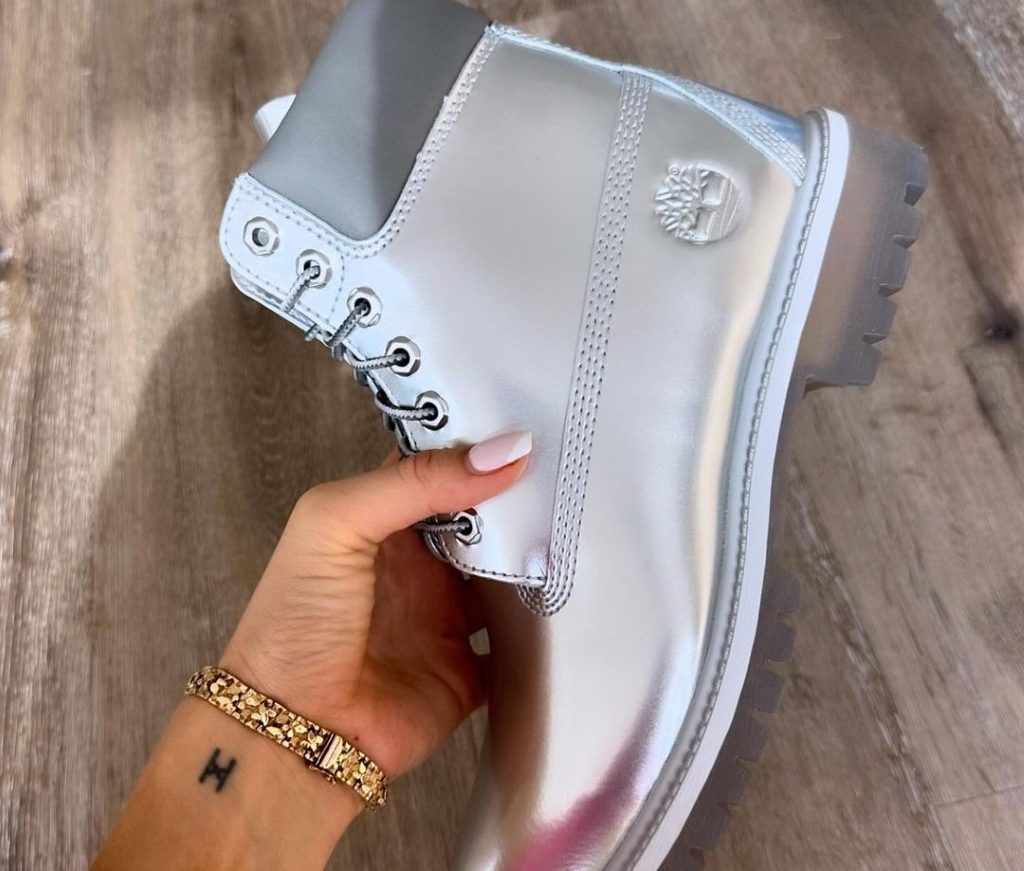The recently released Sundance award-winning A Thousand and One, directed by A.V. Rockwell has been making waves through powerful performances and heartfelt storytelling, bolstored by gorgeous visuals of Harlem. Starring the talented Teyana Taylor, the film takes viewers on a journey through time and space, exploring themes of motherhood, love, loss and the human experience as it plays out against a rapidly changing community.
Melissa Vargas‘ costume design is a crucial element of the film, carefully crafted to convey each character’s journey rather than relying on simply adorning them in prominent ’90s-era labels. Vargas takes a nuanced approach, staying true to the era while making thoughtful costume choices that add depth and texture to the characters.
In an email an exchange with Vargas, she shared how she pursued a career in costume design and established her name in the industry. She also provides details on creating the costumes for A Thousand And One, and how she went about capturing the essence of a ’90s era New York style while also communicating the story.
Snobette: Where do you call home?
Melissa Vargas: “We moved to the states when I was about 12 years old from Colombia. We lived in Teaneck and Leonia, New Jersey, which are right next to each other. As I got older, I would go to the City all the time. I have a strong connection with New York City. It’s a city that gave me a sense of independence and also motivated me to help my mom out. I was raised by a single mother who loved us passionately. My father passed away when I was young, so she loved us doubly. I can really connect with that fierce kind of motherly love that was very present in the film. Even though I wasn’t born here, I have an attachment to New York.”
Snobette: What inspired you to become a costume designer?
Melissa Vargas: “I initially had plans of becoming a teacher and was passionate about education as a career path. However, while attending college, I was working at a bar where we had to dress up in costumes. Thanks to my grandmother, who had taught me how to sew at a young age, I started altering and customizing the thrifted pieces I found and wore them to work. This sparked my love for upcycling and costume design.
Snobette: How did you transition from wanting to be a teacher to pursuing a career in costume design?
Melissa Vargas: “Over time, my passion for upcycling grew, and I became disillusioned with the educational system. I realized that I needed to choose a different path for myself, and costume design was something that truly sparked my creativity. It was a leap of faith, but I decided to follow my passion and pursue a career in costume design.”


Snobette: Can you tell us about your first costume design job and how it influenced your career?Melissa Vargas: “My first big costume design job was for Danny Brown’s music video “All Grown Up” around 2012. It was an amazing experience creating the style for the young actor in the video. Being on set and seeing my vision come to life was incredibly fulfilling. It was like a taste of what I could achieve as a costume designer, and it further fueled my passion for the craft.”
Snobette: How did you progress in your career after your first job?
Melissa Vargas: “Word of mouth about my work on Danny Brown’s music video led me to various internships and production projects. I continued to gain experience and expand my skill set, working on different projects and collaborating with other professionals in the industry. Each opportunity helped me grow as a costume designer and solidified my dedication to this field.”
Snobette: Aside from the obvious length of time, is there a major difference between working on wardrobe for a film and a television series?
Melissa Vargas: “Yes, there are some differences between working on wardrobe for a film and a television series. In a series, we typically have a longer time to tell a story, but when it comes to prepping, we’re always working a week ahead. In film, we have set weeks and locations. The challenge with a series is that we often don’t get the scripts or locations ahead of time, so we have to pivot quickly based on what we receive.”
Snobette: How did you get involved with the film One And A Thousand?
Melissa Vargas: “I got involved with One And A Thousand through a meeting set up by [talent agency] WME with the direcor, A.V. Rockwell, and Jazmin, one of the producers. The first time I read the script, I cried. I knew that I had to work on this film. I really wanted to help tell the story and execute A.V.’s vision. In this film, the costumes are important, but we also didn’t want them to be flashy. The goal was to create a grounded feel. We really dissected every frame of this journey and worked to reflect the character’s journey through the costumes.
Snobette: Considering the trendiness of logos in ’90s-era, inner-city New York, the presence of bold logos is not as prominent as one would think.
Melissa Vargas: “Yes, that’s true. In New York during that time, logos and brands were really prominent. I worked on two seasons of “Wu Tang: An American Saga,” and for that we used a lot of brands and logos because they represented the hard work and effort the characters put in to obtaining those pieces. New Yorkers always strive to look fresh. However, with this story, we didn’t want the audience to be too focused on the logos or brands. We wanted to include them, but in a subtle way that doesn’t take away from the performances, moments, or emotions of the scenes.”
Snobette: What was your overall approach to costume design in One And A Thousand?
Melissa Vargas: “In One And A Thousand we wanted the costumes to feel grounded and authentic to the story and characters. We worked closely with A.V. Rockwell’s vision and the emotions of the scenes to create a visual language through the costumes. We paid attention to every detail, from the fabrics to the colors, to ensure that the costumes reflected the character’s journey and the overall tone of the film. We aimed to create a visual storytelling element that enhanced the performances and added depth to the story without overpowering it with flashy logos or brands.”
Snobette: How do you balance the creative vision of the director with the practicalities of costume design?
Melissa Vargas: “It’s definitely a collaborative process. I work closely with directors to understand their vision for the characters and the story. We have discussions about the emotions, tone and visual language of the film, and I bring my expertise in costume design to translate that vision into practical costumes that work for the actors and the production. It’s important to find a balance between the creative vision and the practical aspects of costume design, such as budget, timeline, and functionality.”
Snobette: With many of the trends in the ’90s being current, what choices did you have to make to make the look more authentic?
Melisa Vargas: “When we think about Inez, the character played by Teyana Taylor, I really considered color and silhouette. While the ’90s silhouette is popular now, it has a modern twist. The hemlines, the way jeans fall, and how a t-shirt drapes on the body are different now. So when we focused on the silhouette of Inez’s ’90s look and we made subtle changes to the jeans or the colors to give it a more authentic feel. As we see her character evolve throughout the film, her style changes as well. She’s not as bright and energetic as she was in the beginning, and that was intentional to reflect the storyline.”
Snobette: In the scene where Inez is moving into her apartment, she was wearing Reebok Pump sneakers. Can you tell us the story behind that?
Melissa Vargas: “Absolutely! We had a whole timeline of sneaker releases, with images and years when the sneakers came out. We were very specific about the details. For some styles, like the Reebok Pump, we had to source them on eBay because they were not readily available in stores anymore. As an indie film, we had to be mindful of our budget, so we had to make strategic decisions on where to allocate our resources, including the sneakers. So, we made sure to choose sneakers that were released during that time period to maintain authenticity in the film.”
Snobette: What role did jewelry play in the film?
Melissa Vargas: “Jewelry played a significant role in the film. It served as a way to tie the character’s overall look together. We carefully chose jewelry pieces that felt authentic to the character, such as the bamboo earrings, and decided on the shape and style that would be suitable for different moments in the film. When she leaves her bamboo earrings behind at one point in the story it signifies a change in the her journey as a character.
“As the story progresses, we intentionally decreased the layering of necklaces and rings, stripping the character down to reflect her emotional state. The jewelry was a key component of the character’s wardrobe and helped to express her full self at the beginning of the story.”
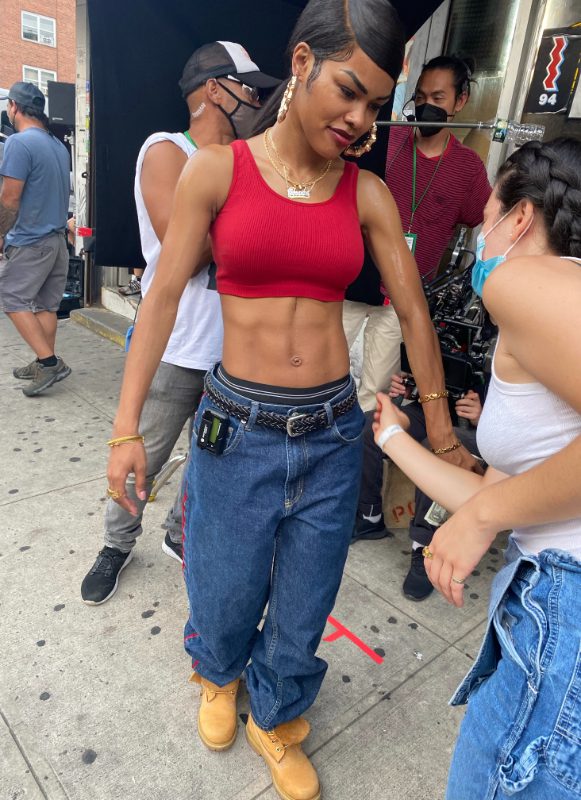

Snobette: If you had a pick a favorite look in the film what would it be?
Melissa Vargas: “If I were to choose a look that I connected with the most on any character, it would be the one where she was wearing baggy Tommy Hilfiger jeans and Timberland boots while handing out flyers. I found this combination to be a reflection of many aspects of her character, including playfulness, sexiness, toughness, and coolness. She stood out in the middle of the street and looked amazing in every backdrop we put her in. This outfit made us smile every time we saw her wearing it, and it felt like the epitome of summer in New York. I connected with this look the most because it captured the essence of the character and conveyed the intended message about her personality and style.”
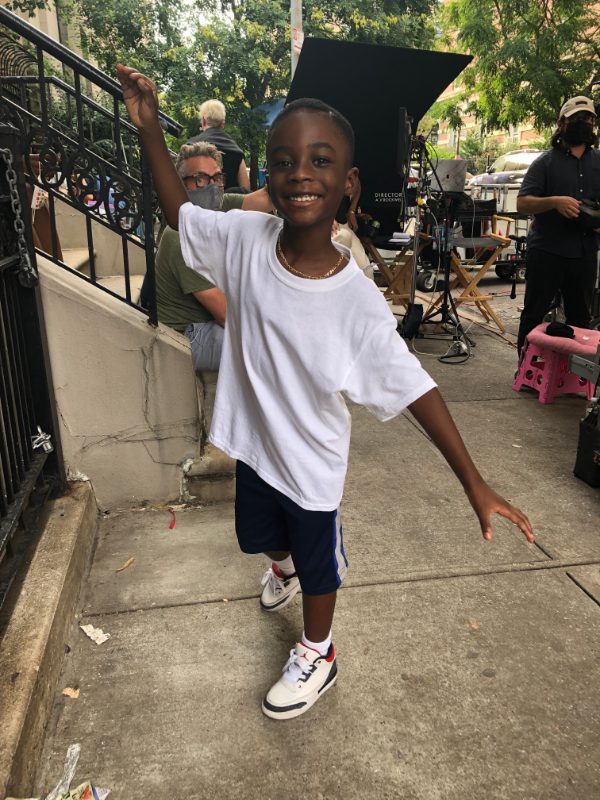

Snobette: How did you approach showing brands in the film?
Melissa Vargas: “We incorporated iconic brands of the time into the wardrobe, such as the Avirex jacket, Raiders pullover sweater, and The North Face jacket, to reflect how Lucky [performed by Will Catlett] was expressing himself during that period. We wanted to show his evolution and how his style changed over time, as we stripped both characters down to tell their story. The long white tees, particularly the pro club tees, were a significant trend in New York at that time, and we made sure to include them in Terry’s wardrobe as well. It was important to showcase how simple items like a white t-shirt could help Terry stay fresh and look good. Besides some branding from Maurice Malone jeans and sneakers, Terry’s wardrobe had minimal branding. As the story progresses, there is less emphasis on branding and more focus on the characters and their journey.
Snobette: What is one of your strengths that you believe has allowed you excel in costume design?Melissa Vargas: “I believe my proficiency in sewing and garment construction, coupled with my appreciation for quality and attention to detail, has contributed to my success. My tailor is an invaluable partner in my department, and together we have transformed many items of clothing that were too big or small, creating entirely new outfits. I’ve learned that with a bit of creativity and vision, you can make simple alterations that make someone feel confident and completely different.”
“I took a few courses in costume design, and everything I learned was incredible. During the production of a film I worked on, I had the privilege of working with Debbie Holbrook, the wardrobe supervisor, who taught me so much about the practical aspects of bringing a vision to life. It’s one thing to have a great idea, but without the know-how to execute it, there’s a whole other set of challenges to overcome.”


